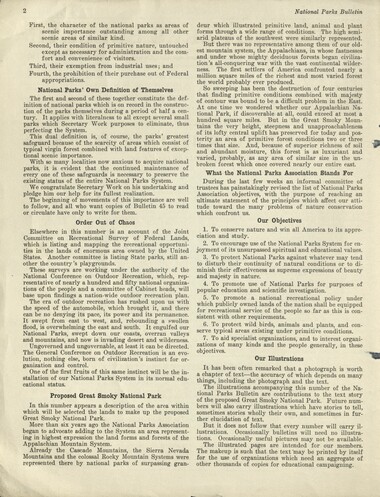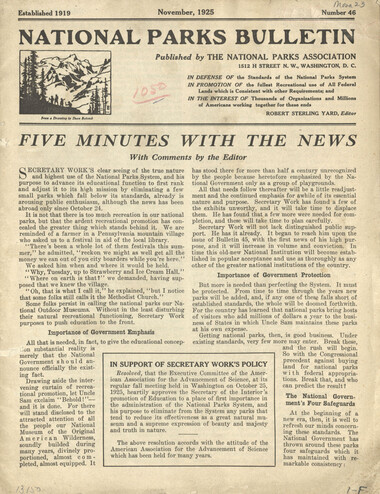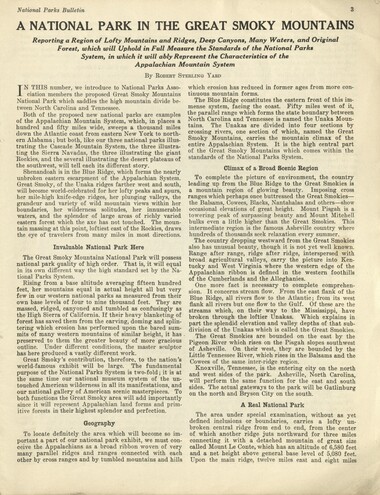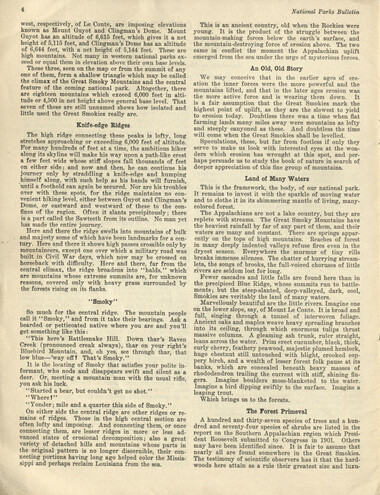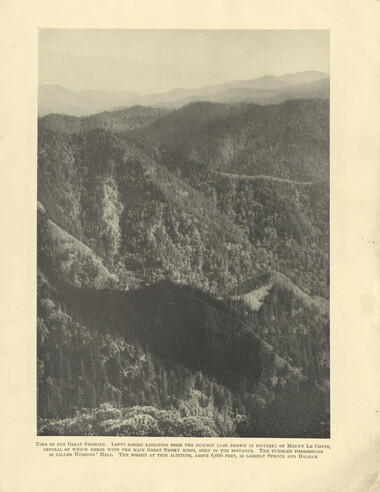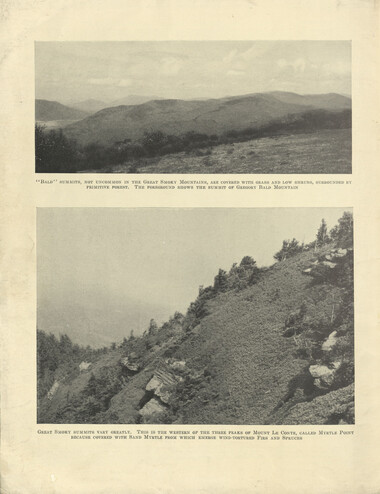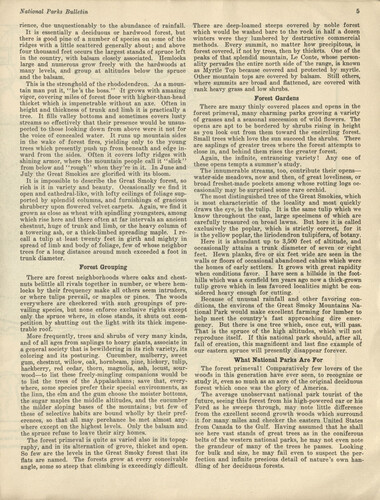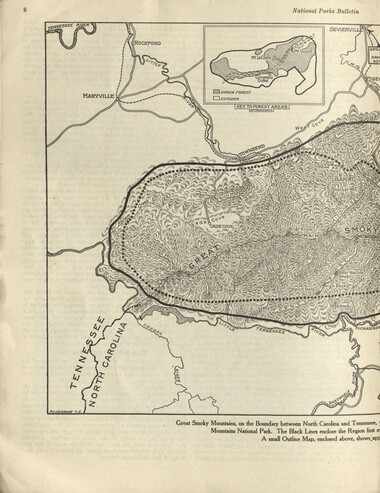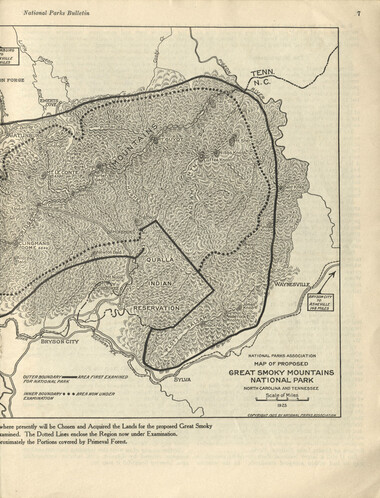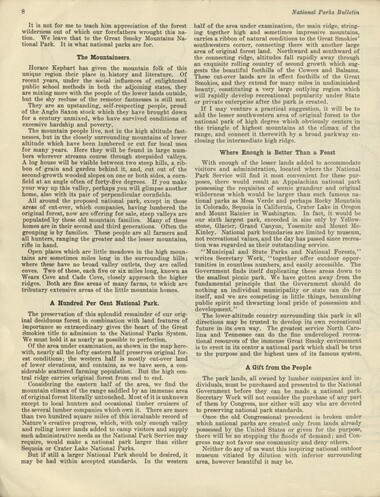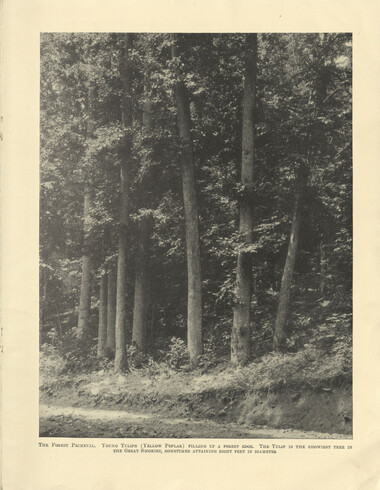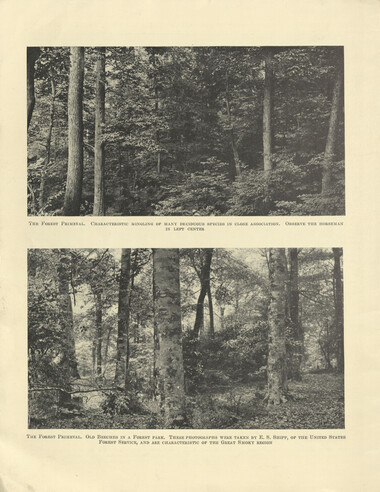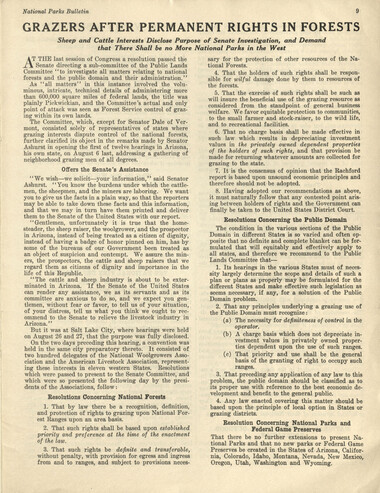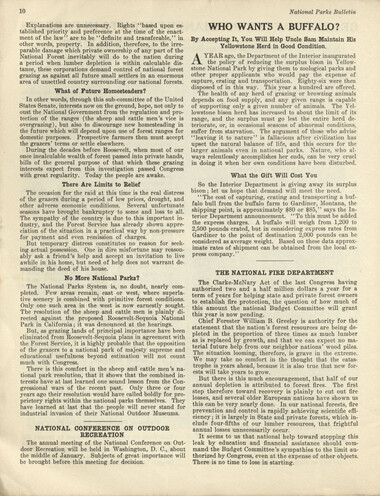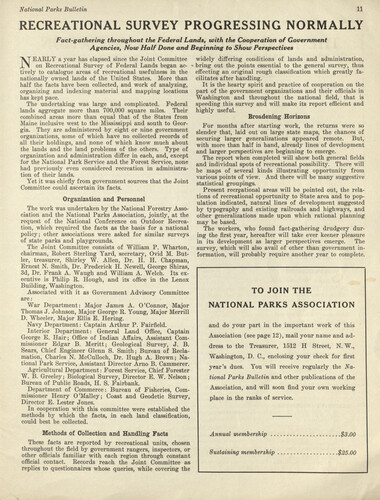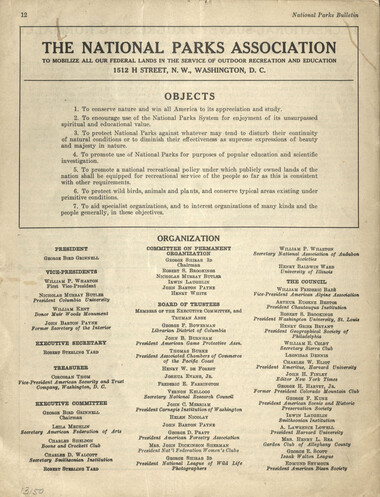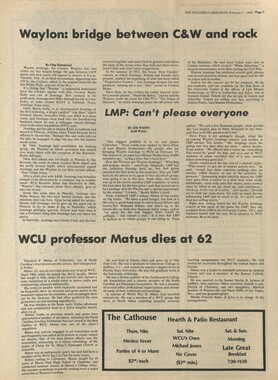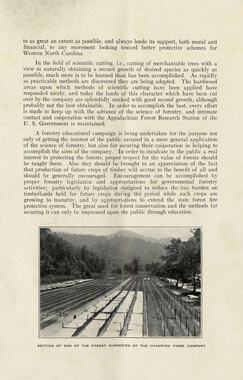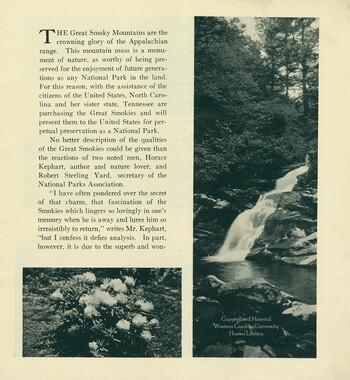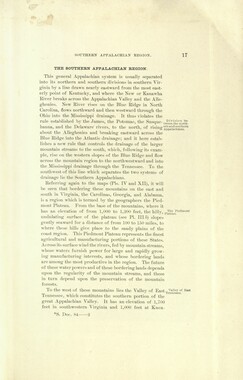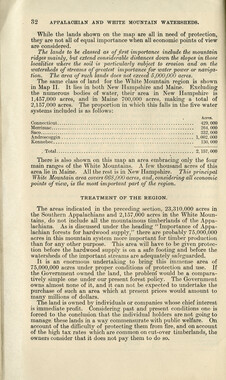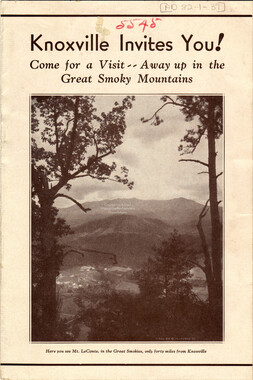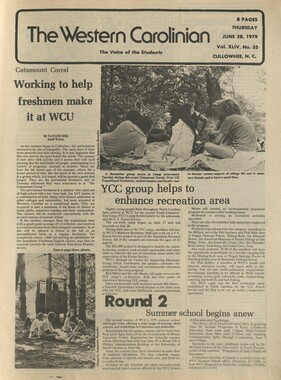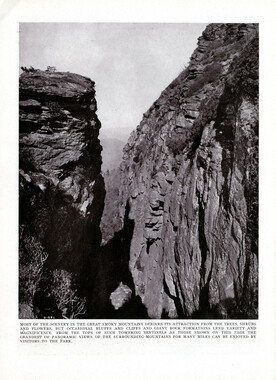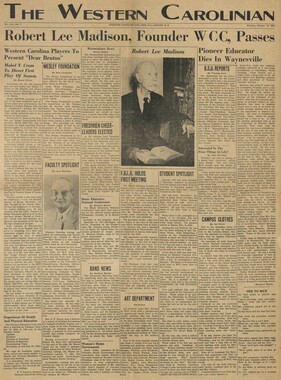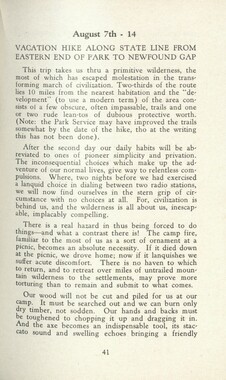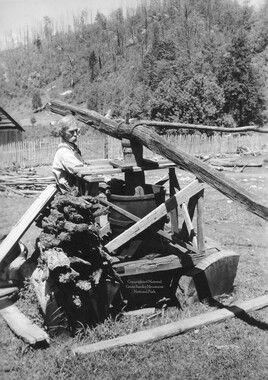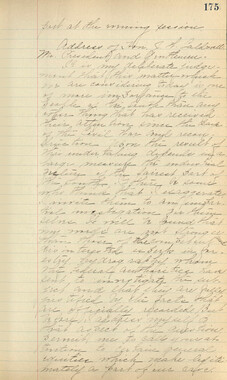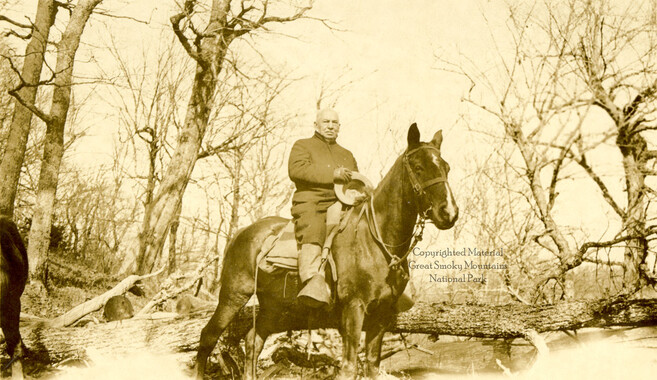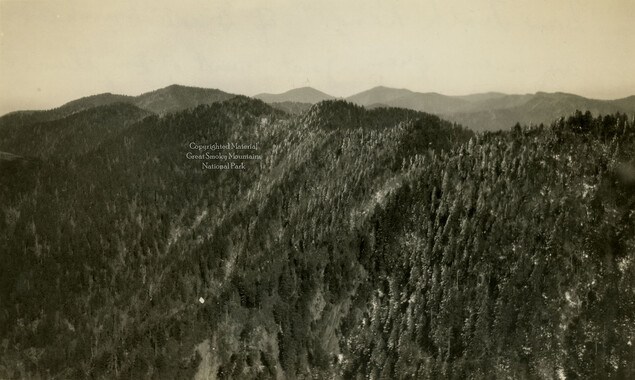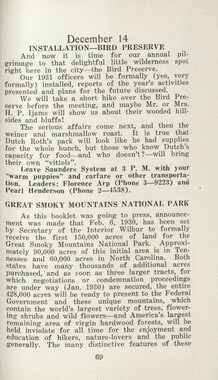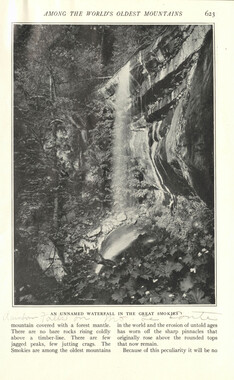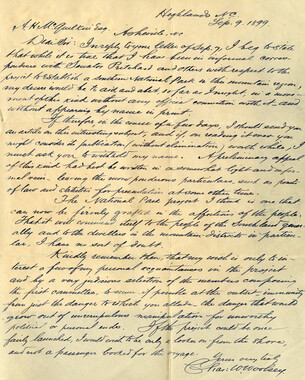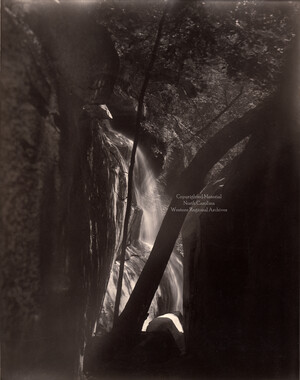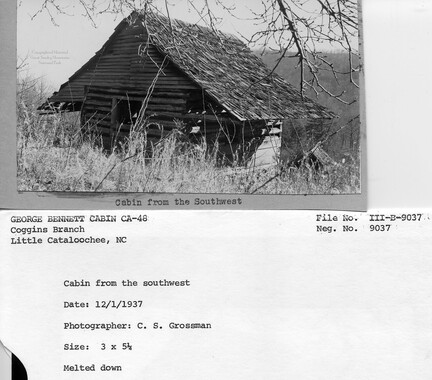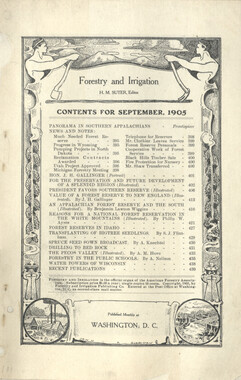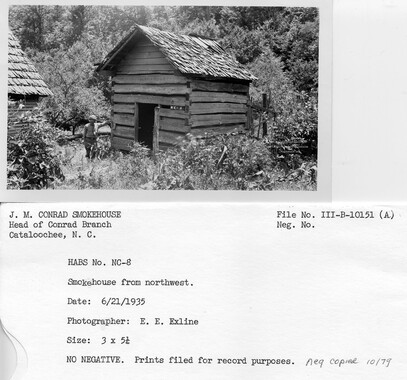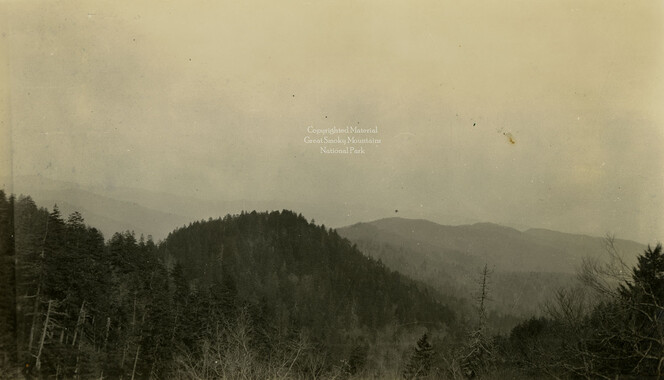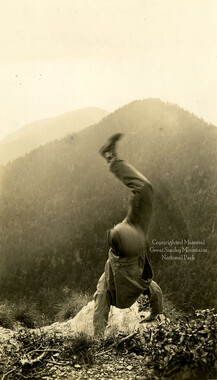Western Carolina University (20)
View all
- Canton Champion Fibre Company (2308)
- Cherokee Traditions (293)
- Civil War in Southern Appalachia (165)
- Craft Revival (1942)
- Great Smoky Mountains - A Park for America (2767)
- Highlights from Western Carolina University (430)
- Horace Kephart (941)
- Journeys Through Jackson (154)
- LGBTQIA+ Archive of Jackson County (26)
- Oral Histories of Western North Carolina (314)
- Picturing Appalachia (6772)
- Stories of Mountain Folk (413)
- Travel Western North Carolina (160)
- Western Carolina University Fine Art Museum Vitreograph Collection (129)
- Western Carolina University Herbarium (92)
- Western Carolina University: Making Memories (708)
- Western Carolina University Publications (2283)
- Western Carolina University Restricted Electronic Theses and Dissertations (146)
- Western North Carolina Regional Maps (71)
- World War II in Southern Appalachia (131)
University of North Carolina Asheville (6)
View all
- Allanstand Cottage Industries (62)
- Appalachian National Park Association (53)
- Bennett, Kelly, 1890-1974 (1388)
- Berry, Walter (76)
- Brasstown Carvers (40)
- Carver, George Washington, 1864?-1943 (26)
- Cathey, Joseph, 1803-1874 (1)
- Champion Fibre Company (233)
- Champion Paper and Fibre Company (297)
- Cherokee Indian Fair Association (16)
- Cherokee Language Program (22)
- Crowe, Amanda (40)
- Edmonston, Thomas Benton, 1842-1907 (7)
- Ensley, A. L. (Abraham Lincoln), 1865-1948 (275)
- Fromer, Irving Rhodes, 1913-1994 (70)
- George Butz (BFS 1907) (46)
- Goodrich, Frances Louisa (120)
- Grant, George Alexander, 1891-1964 (96)
- Heard, Marian Gladys (60)
- Kephart, Calvin, 1883-1969 (15)
- Kephart, Horace, 1862-1931 (313)
- Kephart, Laura, 1862-1954 (39)
- Laney, Gideon Thomas, 1889-1976 (439)
- Masa, George, 1881-1933 (61)
- McElhinney, William Julian, 1896-1953 (44)
- Niggli, Josephina, 1910-1983 (10)
- North Carolina Park Commission (105)
- Osborne, Kezia Stradley (9)
- Owens, Samuel Robert, 1918-1995 (11)
- Penland Weavers and Potters (36)
- Roberts, Vivienne (15)
- Roth, Albert, 1890-1974 (142)
- Schenck, Carl Alwin, 1868-1955 (1)
- Sherrill's Photography Studio (2565)
- Southern Highland Handicraft Guild (127)
- Southern Highlanders, Inc. (71)
- Stalcup, Jesse Bryson (46)
- Stearns, I. K. (213)
- Thompson, James Edward, 1880-1976 (226)
- United States. Indian Arts and Crafts Board (130)
- USFS (683)
- Vance, Zebulon Baird, 1830-1894 (1)
- Weaver, Zebulon, 1872-1948 (58)
- Western Carolina College (230)
- Western Carolina Teachers College (282)
- Western Carolina University (1794)
- Western Carolina University. Mountain Heritage Center (18)
- Whitman, Walt, 1819-1892 (10)
- Wilburn, Hiram Coleman, 1880-1967 (73)
- Williams, Isadora (3)
- Cain, Doreyl Ammons (0)
- Crittenden, Lorraine (0)
- Rhodes, Judy (0)
- Smith, Edward Clark (0)
- Appalachian Region, Southern (2399)
- Asheville (N.C.) (1917)
- Avery County (N.C.) (26)
- Blount County (Tenn.) (161)
- Buncombe County (N.C.) (1671)
- Cherokee County (N.C.) (283)
- Clay County (N.C.) (555)
- Graham County (N.C.) (233)
- Great Smoky Mountains National Park (N.C. and Tenn.) (510)
- Haywood County (N.C.) (3522)
- Henderson County (N.C.) (70)
- Jackson County (N.C.) (4692)
- Knox County (Tenn.) (25)
- Knoxville (Tenn.) (12)
- Lake Santeetlah (N.C.) (10)
- Macon County (N.C.) (420)
- Madison County (N.C.) (211)
- McDowell County (N.C.) (39)
- Mitchell County (N.C.) (132)
- Polk County (N.C.) (35)
- Qualla Boundary (981)
- Rutherford County (N.C.) (76)
- Swain County (N.C.) (2113)
- Transylvania County (N.C.) (247)
- Watauga County (N.C.) (12)
- Waynesville (N.C.) (73)
- Yancey County (N.C.) (72)
- Aerial Photographs (3)
- Aerial Views (60)
- Albums (books) (4)
- Articles (1)
- Artifacts (object Genre) (228)
- Bibliographies (1)
- Biography (general Genre) (2)
- Cards (information Artifacts) (38)
- Clippings (information Artifacts) (191)
- Crafts (art Genres) (622)
- Depictions (visual Works) (21)
- Design Drawings (1)
- Drawings (visual Works) (184)
- Envelopes (73)
- Facsimiles (reproductions) (1)
- Fiction (general Genre) (4)
- Financial Records (12)
- Fliers (printed Matter) (67)
- Glass Plate Negatives (381)
- Guidebooks (2)
- Internegatives (10)
- Interviews (812)
- Land Surveys (102)
- Letters (correspondence) (1013)
- Manuscripts (documents) (619)
- Maps (documents) (177)
- Memorandums (25)
- Minutes (administrative Records) (59)
- Negatives (photographs) (5835)
- Newsletters (1285)
- Newspapers (2)
- Occupation Currency (1)
- Paintings (visual Works) (1)
- Pen And Ink Drawings (1)
- Periodicals (193)
- Personal Narratives (10)
- Photographs (12976)
- Plans (maps) (1)
- Poetry (7)
- Portraits (1960)
- Postcards (329)
- Programs (documents) (151)
- Publications (documents) (2237)
- Questionnaires (65)
- Scrapbooks (282)
- Sheet Music (2)
- Slides (photographs) (402)
- Songs (musical Compositions) (2)
- Sound Recordings (796)
- Specimens (92)
- Speeches (documents) (15)
- Tintypes (photographs) (8)
- Transcripts (322)
- Video Recordings (physical Artifacts) (23)
- Vitreographs (129)
- Text Messages (0)
- A.L. Ensley Collection (275)
- Appalachian Industrial School Records (7)
- Appalachian National Park Association Records (336)
- Axley-Meroney Collection (2)
- Bayard Wootten Photograph Collection (20)
- Bethel Rural Community Organization Collection (7)
- Blumer Collection (5)
- C.W. Slagle Collection (20)
- Canton Area Historical Museum (2110)
- Carlos C. Campbell Collection (282)
- Cataloochee History Project (65)
- Cherokee Studies Collection (4)
- Daisy Dame Photograph Album (5)
- Daniel Boone VI Collection (1)
- Doris Ulmann Photograph Collection (112)
- Elizabeth H. Lasley Collection (1)
- Elizabeth Woolworth Szold Fleharty Collection (4)
- Frank Fry Collection (95)
- George Masa Collection (173)
- Gideon Laney Collection (452)
- Hazel Scarborough Collection (2)
- Hiram C. Wilburn Papers (28)
- Historic Photographs Collection (236)
- Horace Kephart Collection (861)
- Humbard Collection (33)
- Hunter and Weaver Families Collection (1)
- I. D. Blumenthal Collection (4)
- Isadora Williams Collection (4)
- Jesse Bryson Stalcup Collection (47)
- Jim Thompson Collection (224)
- John B. Battle Collection (7)
- John C. Campbell Folk School Records (80)
- John Parris Collection (6)
- Judaculla Rock project (2)
- Kelly Bennett Collection (1407)
- Love Family Papers (11)
- Major Wiley Parris Civil War Letters (3)
- Map Collection (12)
- McFee-Misemer Civil War Letters (34)
- Mountain Heritage Center Collection (4)
- Norburn - Robertson - Thomson Families Collection (44)
- Pauline Hood Collection (7)
- Pre-Guild Collection (2)
- Qualla Arts and Crafts Mutual Collection (12)
- R.A. Romanes Collection (681)
- Rosser H. Taylor Collection (1)
- Samuel Robert Owens Collection (94)
- Sara Madison Collection (144)
- Sherrill Studio Photo Collection (2558)
- Smoky Mountains Hiking Club Collection (616)
- Stories of Mountain Folk - Radio Programs (374)
- The Reporter, Western Carolina University (510)
- Venoy and Elizabeth Reed Collection (16)
- WCU Gender and Sexuality Oral History Project (32)
- WCU Mountain Heritage Center Oral Histories (25)
- WCU Oral History Collection - Mountain People, Mountain Lives (71)
- WCU Students Newspapers Collection (1744)
- Western North Carolina Tomorrow Black Oral History Project (69)
- William Williams Stringfield Collection (2)
- Zebulon Weaver Collection (109)
- African Americans (390)
- Appalachian Trail (35)
- Artisans (521)
- Cherokee art (84)
- Cherokee artists -- North Carolina (10)
- Cherokee language (21)
- Cherokee pottery (101)
- Cherokee women (208)
- Church buildings (167)
- Civilian Conservation Corps (U.S.) (110)
- College student newspapers and periodicals (1830)
- Dams (103)
- Dance (1023)
- Education (222)
- Floods (61)
- Folk music (1015)
- Forced removal, 1813-1903 (2)
- Forest conservation (220)
- Forests and forestry (1058)
- Gender nonconformity (4)
- Great Smoky Mountains National Park (N.C. and Tenn.) (181)
- Hunting (38)
- Landscape photography (10)
- Logging (103)
- Maps (84)
- Mines and mineral resources (8)
- North Carolina -- Maps (18)
- Paper industry (38)
- Postcards (255)
- Pottery (135)
- Railroad trains (71)
- Rural electrification -- North Carolina, Western (3)
- School integration -- Southern States (2)
- Segregation -- North Carolina, Western (5)
- Slavery (5)
- Sports (452)
- Storytelling (245)
- Waterfalls -- Great Smoky Mountains (N.C. and Tenn.) (66)
- Weaving -- Appalachian Region, Southern (280)
- Wood-carving -- Appalachian Region, Southern (328)
- World War, 1939-1945 (173)
National Parks Bulletin, 1925
Item
Item’s are ‘child’ level descriptions to ‘parent’ objects, (e.g. one page of a whole book).
-
-
National Parks Bulletin First, the character of the national parks as areas of scenic importance outstanding among all other scenic areas of similar kind. Second, their condition of primitive nature, untouched except as necessary for administration and the comfort and convenience of visitors. Third, their exemption from industrial uses; and Fourth, the prohibition of their purchase out of Federal appropriations. National Parks' Own Definition of Themselves The first and second of these together constitute the definition of national parks which is on record in the construction of the parks themselves during a period of half a century. It applies with literalness to all except several small parks which Secretary Work purposes to eliminate, thus perfecting the System. This dual definition is, of course, the parks' greatest safeguard because of the scarcity of areas which consist of typical virgin forest combined with land features of exceptional scenic importance. With so many localities now anxious to acquire national parks, it is evident that the continued maintenance of every one of these safeguards is necessary to preserve the existing status of the entire National Parks System. We congratulate Secretary Work on his undertaking and pledge him our help for its fullest realization. The beginning of movements of this importance are well to follow, and all who want copies of Bulletin 45 to read or circulate have only to write for them. Order Out of Chaos Elsewhere in this number is an account of the Joint Committee on Recreational Survey of Federal Lands, which is listing and mapping the recreational opportunities in the lands of enormous area owned by the United States. Another committee is listing State parks, still another the country's playgrounds. These surveys are working under the authority of the National Conference on Outdoor Recreation, which, representative of nearly a hundred and fifty national organizations of the people and a committee of Cabinet heads, will base upon findings a nation-wide outdoor recreation plan. The era of outdoor recreation has rushed upon us with the speed of the automobile, which brought it, and there can be no denying its pace, its power and its permanence. It swept from east to west, and, rebounding a swollen flood, is overwhelming the east and south. It engulfed our National Parks, swept down our coasts, overran valleys and mountains, and now is invading desert and wilderness. Ungoverned and ungovernable, at least it can be directed. The General Conference on Outdoor Recreation is an evolution, nothing else, born of civilization's instinct for organization and control. One of the first fruits of this same instinct will be the installation of our National Parks System in its normal educational status. Proposed Great Smoky National Park In this number appears a description of the area within which will be selected the lands to make up the proposed Great Smoky National Park. More than six years ago the National Parks Association began to advocate adding to the System an area representing in highest expression the land forms and forests of the Appalachian Mountain System. Already the Cascade Mountains, the Sierra Nevada Mountains and the colossal Rocky Mountain Systems were represented there by national parks of surpassing gran deur which illustrated primitive land, animal and plant forms through a wide range of conditions. The high semi- arid plateaus of the southwest were similarly represented. But there was no representative among them of our oldest mountain system, the Appalachians, in whose fastnesses and under whose mighty deciduous forests began civilization's all-conquering war with the vast continental wilderness. The first settlers of America confronted nearly a million square miles of the richest and most varied forest the world probably ever produced. So sweeping has been the destruction of four centuries that finding primitive conditions combined with majesty of contour was bound to be a difficult problem in the East. At one time we wondered whether our Appalachian National Park, if discoverable at all, could exceed at most a hundred square miles. But in the Great Smoky Mountains the very height, steepness and unapproachableness of its lofty central uplift has preserved for today and posterity an area of primitive forest conditions two or three times that size. And, because of superior richness of soil and abundant moisture, this forest is as luxuriant and varied, probably, as any area of similar size in the unbroken forest which once covered nearly our entire east. What the National Parks Association Stands For During the last few weeks an informal committee of trustees has painstakingly revised the list of National Parks Association objectives, with the purpose of reaching an ultimate statement of the principles which affect our attitude toward the many problems of nature conservation which confront us. Our Objectives 1. To conserve nature and win all America to its appreciation and study. 2. To encourage use of the National Parks System for enjoyment of its unsurpassed spiritual and educational values. 3. To protect National Parks against whatever may tend to disturb their continuity of natural conditions or to diminish their effectiveness as supreme expressions of beauty and majesty in nature. 4. To promote use of National Parks for purposes of popular education and scientific investigation. 5. To promote a national recreational policy under which publicly owned lands of the nation shall be equipped for recreational service of the people so far as this is consistent with other requirements. 6. To protect wild birds, animals and plants, and conserve typical areas existing under primitive conditions. 7. To aid specialist organizations, and to interest organizations of many kinds and the people generally, in these objectives. Our Illustrations It has been often remarked that a photograph is worth a chapter of text—the accuracy of which depends on many things, including the photograph and the text. The illustrations accompanying this number of the National Parks Bulletin are contributions to the text story of the proposed Great Smoky National Park. Future numbers will also carry illustrations which have stories to tell, sometimes stories wholly their own, and sometimes in further elucidation of text. But it does not follow that every number will carry illustrations. Occasionally bulletins will need no illustrations. Occasionally useful pictures may not be available. The illustrated pages are intended for our members. The makeup is such that the text 'may be printed by itself for the use of organizations which need an aggregate of other thousands of copies for educational campaigning.
Object
Object’s are ‘parent’ level descriptions to ‘children’ items, (e.g. a book with pages).
-
This 1925 issue of the National Parks Bulletin includes an article titled, “A National Park in the Great Smoky Mountains” by Robert Sterling Yard (1861-1945). A Washington D.C.-based organization, the National Parks Association was established in 1919 with a mission “To mobilize our federal lands in the service of outdoor recreation and education.” Yard, a writer and wilderness activist, was the association’s secretary and the editor of the bulletin. This issue contains a 1925 map of the proposed Great Smoky Mountains National Park and several photographs. While this bulletin is in the collection of the George Masa Papers, the photographs do not carry a photographer’s name.
-
